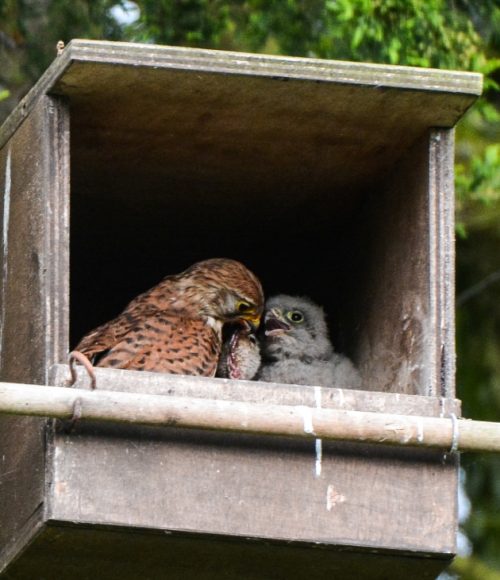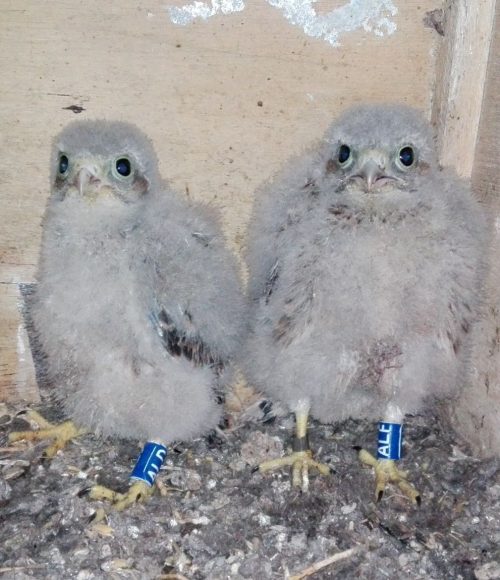
The UK Kestrel population has significantly declined across the UK since the late 20th century. This has led to the Kestrel being ‘Amber-listed’ as a species of conservation concern in the UK. One of the difficulties we face is that the exact reasons for the decline in Kestrels are not known. In order to conserve Kestrels and hopefully halt the population decline, we need to understand more about their survival, dispersal and breeding biology.
The Kestrel Colour-ring Project is part of the Trust’s wider Kestrel Conservation Monitoring Project. The aim of the Colour-ring Project is to gain insights into Kestrel biology, particularly the movements of juvenile Kestrels after fledging.
Since 2015 we have fitted approximately 340 Kestrels with blue colour-rings, and we continue this in the breeding season each year. Most of the colour-ringed birds are ringed as pre-fledged Kestrels that are still in the nest, however if possible we do also fit colour-rings to adult Kestrels. The colour-ring project area covers the same area as our existing Kestrel monitoring project, and we are re-visiting original nest sites to look for the colour-ringed Kestrels.
Reading colour-rings takes some practice and patience, and we have a team of dedicated volunteers for the job. Looking for colour-ringed Kestrels is usually best done in winter because there is less foliage on the trees and birds are easier to spot. A pair of binoculars is essential!
Each ring has a unique alphanumeric code, which allows identification of the individual bird. When the rings were fitted by our Conservation Biologist, various measurements were taken and additional details such as the age of the bird and location of the nest site (or bird) were recorded. Establishing the current locations of ringed birds allows us to determine how far the birds have moved since they were ringed.


The larger Kestrel monitoring project aims to discover information such as Kestrel density and where the birds prefer to breed. The Colour-ring Project will provide information on dispersal distances from breeding sites and also rates of survival. Eventually we hope to re-sight colour-ringed birds at their nest sites. The project is ongoing and will give us greater insights into the breeding biology and movements of Kestrels that will help inform their conservation.

If you spot a Kestrel wearing a blue ring on it’s legs around the British countryside, we’d like to know! We rely heavily on observations from the public in the South of England for this project.
If you spot a Kestrel with a coloured ring, please record the unique code (located on the ring itself, using binoculars or from a photograph), an accurate location of where it was spotted and the date and time. Additional information about the sex of the bird is also useful (females have a brown head whilst males have a slate grey head).
Please send these details to us via conservation@hawkconservancy.org.